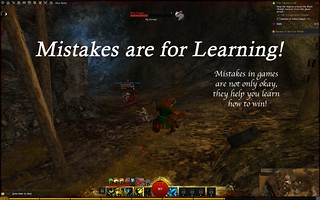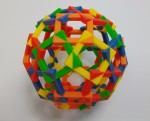[This is part of a series of posts I’m writing as I reflect on another online course I’m taking this summer, Stanford University’s EDUC115N How to Learn Math. Sure, I’m a Science teacher but I have taught Math so I’m familiar with Math instruction. Besides, we do use Math in Science so it’s not like I don’t do any Math with my students and my NB certification is an early adolescent generalist, which means I’m an integrationist at heart.]
 In my last post I shared some of the problems I learned about from the How to Learn Math course I’m taking, specifically the stereotypes and myths. I also shared some strategies we could start implementing in our classrooms to help counter the negative attitudes around Math by encouraging a growth mindset. By making a few changes in our classrooms and by being aware of how we promote fixed or growth mindsets about learning, specifically Math learning, we can help more students. But what do schools need to do to show that a growth mindset is really what we value and believe? That will require much more change because many things we do actually support a fixed mindset of learning or knowing or being able to do Math.
In my last post I shared some of the problems I learned about from the How to Learn Math course I’m taking, specifically the stereotypes and myths. I also shared some strategies we could start implementing in our classrooms to help counter the negative attitudes around Math by encouraging a growth mindset. By making a few changes in our classrooms and by being aware of how we promote fixed or growth mindsets about learning, specifically Math learning, we can help more students. But what do schools need to do to show that a growth mindset is really what we value and believe? That will require much more change because many things we do actually support a fixed mindset of learning or knowing or being able to do Math.
Brain research has found that the brain exhibits more plasticity when we make mistakes. This isn’t new. I’ve been telling my students that for years. Any gamer will tell you that. Why is it that it’s okay to make mistakes and learn from them when playing a game but not in school when learning?? When you get something right, you are NOT learning because you already know it. Makes sense. It’s when we don’t know and get something wrong that the most growth is taking place. Our brains are actually making new neural connections. It’s at that point that the right feedback can help students progress and build the right connections to learn and improve. The students need to do the learning and sometimes that means struggling. The problem is that kids think that making mistakes means they’re dumb. That and there’s the myth that slower processors aren’t as smart as their quicker counterparts. What’s actually true is that there are many mathematicians who are slow processors and in fact they are thinking more deeply when they take their time! Still, our culture thinks if you get an answer faster, you’re better at it. We have to honor and acknowledge our slower thinkers and processors as well as value and promote working hard and persistence through struggling and effort.
If a child has a fixed mindset and that mindset is that he cannot do Math then making a mistake reinforces his belief in his ability. It’s a self fulfilling prophecy and even feedback may not work if the child is convinced that he cannot do the Math. Even a fixed mindset that he can do Math isn’t much better because if the child makes a mistake that means that he is not smart, or cannot do the Math. Therefore mistakes are much more hazardous. That child will avoid taking risks or choosing challenging courses or Math problems because if he struggles or makes mistakes it will literally rock his world.
Struggling and having to work hard is seen as a bad thing for children with fixed mindsets but it’s actually a good thing! Children with growth mindsets will come to see making mistakes, struggling and working hard as paths to learning and therefore success. There’s no end to how much they can learn or achieve! Now that’s a self fulfilling prophecy that works for the best.
So even if we as teachers start to promote growth mindsets in our classes if the school doesn’t there may be students that just won’t buy it. Let’s say we stop grading students while they are learning and we use more formative assessments and maybe standards-based grading. Yet our school is putting pressure on us to cover a certain amount of curriculum to prepare our students for the standardized Math test or multiple benchmark tests. Even though we’ve made changes to encourage a growth mindset if we continue to use traditional looking Math, with one correct answer, teaching the same methods to all students, we are still sending a message that if you don’t get the Math I’m showing then you can’t do Math! Doing Math that doesn’t look like traditional school Math is a change your school needs to support. A problem of standardized, multiple choice testing is that it narrows Math instruction and promotes a one correct answer, know it or not, fixed mindset. Multiple choice examination should be used sparingly if at all.
I’m also assuming that if you want to switch to less grading or no grading or standards-based grading that your school will support you. I’m taking that for granted because I believe that a teacher can make such a good case for abolishing grades that they will get the support they need.
Now here’s the big one in my mind because I think this happens in a lot of schools (and it happened in the three schools I’ve worked in), ability grouping or tracking. Ability grouping or tracking is the poster child of a fixed mindset. So even if the teachers are showing their students how they can have a growth mindset and learn and do Math and achieve at high levels and we believe in them and we’re not going to grade them down for making mistakes and we get to teach problem solving with more than one correct answer and more than one way to solve it what message do we send them if we split them into the smart group and the not-quite-as-smart group?!? What promotes a fixed mindset and supports the myth that not all kids can learn Math at high levels more than that?! Parents begin to buy into it until it becomes an institution. We’ll have to convince kids that we believe in a growth mindset all the while working in a fixed mindset hell. See I’ve taught the lowest group. I know how they feel about themselves. I know the despair and lack of motivation. They know the system doesn’t believe in them because they are the dumb group. Ability grouping has to stop.
Ability grouping or tracking kids doesn’t work all that great anyway and does more harm than good. Teachers switched to teaching kids by ability because of the difficulty with differentiating Math when there are so many differently abled students in the classroom. Dr. Boaler contends that with good teaching strategies teachers can reach more kids by keeping their classes mixed and promoting a growth mindset.
I think that will be the most difficult one to change because this is one that is supported strongly by teachers. First, we need to convince each other that ability grouping and tracking is bad and then we need training in ways to teach and differentiate learning for all our students in mixed classes (as always). It’s doable. Look at all the best practices we’ve been learning and all the technology we have available to do things we couldn’t do before. So how do we start?



















































